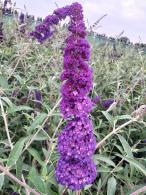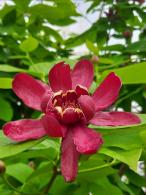Get Additional 5% Off 1st Order
Echinacea Purpurea Prairie Splendor
1. Add items to basket
2. Go to the basket
3. Enter your postcode in Delivery Price Check
Plant shape: 60cm with the flower
Plant variety: Magnus
Pot size: 3 Litres
Plant ID: 2371 1
click to view this plant size >Echinacea Purpurea Prairie Splendor or Purple Coneflower Prairie Splendor
The Echinacea Purpurea Prairie Splendor typically referred to as Purple Coneflower or just Prairie Splendor, is an iconic woodland garden herbaceous perennial. When grown in the garden it naturally attracts a bevy of bees, butterflies, songbirds and woodland creatures. Despite the plant's welcoming benefits to many landscape critters, Echinacea purpurea repels deer from the area which is considered a huge benefit by many gardening enthusiasts.
Daisylike in appearance, the flowers of the Echinacea Purpurea Prairie Splendor bloom from late spring until early fall. Each flower is purplish to magenta in colour and features an eye-catching brilliant orange centre. The solitary blossoms are borne on spikes that rise above the plant’s mint green foliage and often stand 60 centimetres in height. The plant grows in a clumping pattern. Each clump generally measures about 1 metre or less in width. Once established, the Purple Coneflower Prairie Splendor is hardy and drought tolerant. Echinacea Purpurea spreads via seeds and is relatively easy to grow. It tolerates transplanting well.
Echinacea purpurea grows best when planted in an area where it will receive six to eight hours of sunlight per day. However, it will grow in partial shade but may not produce as prolific of a flower display when grown in such conditions.
Echinacea Purpurea Prairie Splendor isn’t picky about soil. It will grow in an acidic or alkaline area. It prefers a well-draining location. Once established, this perennial can withstand even the harshest winters. When the temperatures dip below freezing the plant’s leaves will die back to ground level but when spring arrives, the foliage will rise again with vigorous growth.
During the height of flowering, the blooms can be cut and used in a variety of fresh or dry flower arrangements. Removing the spent flower heads also encourages the plant to produce even more blossoms for a virtually non-stop flowering display. When autumn arrives, the flowers can be left on the plant to form seedheads that provide visual interest and are a favourite food source for a wide array of songbirds.
For best growth results, the Echinacea Purpurea should be planted in the spring. Spring planting gives the plant enough time to grow a strong root system before winter arrives. Water the plants at least once a week when first planted for best growth results. Every three or four years, the plant’s clumps will need to be divided and transplanted into other areas of the garden.













